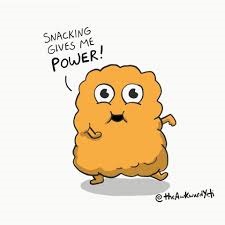
Pet nutrition labels are typically terrible and misleading. When comparing protein, fat, and carbohydrate levels in diets, it’s important to compare apples to apples. Although it might be tempting to compare crude fat between diets, the true fat content can vastly differ depending on the moisture and fiber content.
To make the comparison easy, we want to know what percentage of calories are coming from protein, fat, and carbohydrates. This is referred to as “% Metabolizable Energy” or “%ME.” For example, if our patient is fed 1000 calories a day, and 400 calories are from fat, the %ME fat is 400/1000 = 40%. If another diet has a lower %ME fat of 30%, than 300 out of 1000 calories a day comes from fat.
Roughly speaking, most commercial maintenance diets are 30-40% ME fat, whereas low fat diets can be as low as 15% ME fat. This is particularly important in dogs with chronic pancreatitis who may be sensitive to higher fat content. If you have a dog with chronic pancreatitis and need to switch diets due to comorbidity, choosing a new diet with a comparable %ME fat would be ideal.
Comparing %ME fat could also be useful is in a multidog household being fed a single diet. If a chronic pancreatitis dog shares food with a hypoallergenic dog, try to find a hypoallergenic diet with a tolerable % ME fat.
Product guides should have %ME data available. However, you can also estimate these values using the guaranteed analysis information found on the pet food label. Unfortunately, the carbohydrate content is not given on the guaranteed analysis and must be first calculated. This is done by subtracting away the protein, fat, fiber, moisture, and ash. Ash isn’t required to be on labels and can be estimated to be 3-5%.
Once you have the %s for protein, fat, and carbs, we use the modified Atwater values that tell us how many calories come from a gram of each.
Protein: 3.5 kcal/g
Fat: 8.5 kcal/g
Carbs: 3.5 kcal/g
If you add up all the calories, you can then calculate what percentage comes from each.
Here’s an example:
| Crude Protein | min 20% |
| Crude Fat | min 10% |
| Crude Fiber | max 5% |
| Moisture | max 10% |
To get % carbs, we subtract protein 20%, fat 10% fiber 5%, moisture 10% and ash 3% from 100% to get 52% carbs.
Now, we need to calculate calories from protein, fat, and carbs:
| Protein 20% | = 20 g protein/100 g food X 3.5 kcal/g protein | = 70 kcal/100 g |
| Fat 10% | = 10 g fat/100 g food X 8.5 kcal/g fat | = 85 kcal/100 g |
| Carbs 52% | = 52 g carbs/100g food X 3.5 kcal/g carb | =182 kcal/100 g |
The total kcal/100 g of food is 70 + 85 + 182 = 337 kcal/100 g
Finally, you can calculate the % ME from each:
| Protein | =70/337 | =21% |
| Fat | =85/337 | =25% |
| Carbs | =182/337 | =54% |

To be honest, that’s a lot of work, so head over to our %ME Calculator and save time.
Leave a Reply